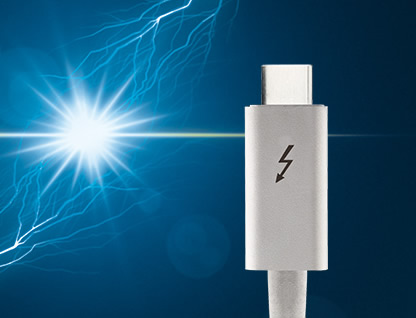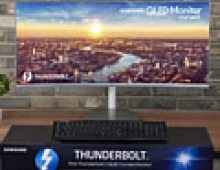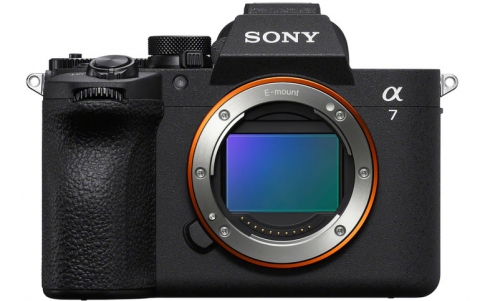
New Intel Thunderbolt 3 Controllers Offer DisplayPort 1.4, and Peripheral Compatibility with USB-C Computer Ports
Intel announced the Intel Thunderbolt 3 controller JHL7x40 series, code named Titan Ridge.
Comprised of three controllers, the JHL7x40 series is a compatible extension of the current line of Intel JHL6x40 Thunderbolt 3 controllers, code named Alpine Ridge.
The JHL7540 and 7340 controllers provide computer makers the same Thunderbolt 3 40Gb/s performance and feature set as Alpine Ridge, and also adds DisplayPort 1.4 capability for increased video performance.
The JHL7440 controller was designed for Thunderbolt 3 monitor and enterprise dock makers who choose to offer basic compatibility when a Thunderbolt 3 monitor or dock is connected to a USB-C computer port. To accomplish this, the JHL7440 controller integrates USB-C computer port compatibility so a Thunderbolt 3 monitor or dock can intelligently provide more performance and features when connected to a Thunderbolt 3 computer port, and basic compatibility when the Thunderbolt 3 monitor or dock is connected to a USB-C computer port. Additionally, as with the other controllers in the JHL7x40 series, the JHL7440 supports DisplayPort 1.4.

The Intel Thunderbolt 3 controller JHL7x40 series is backward compatible with earlier Thunderbolt computers, cables, and peripherals.
Intel is working with the industry to bring JHL7540, JHL7340, and JHL7440 controller based products to market in 2018.
JHL7540 and JHL7340 features for computer makers
- 40Gb/s and PCIe Gen 3 (same as JHL6x40 series)
- Support for DisplayPort 1.4
JHL7440 features for peripheral device makers
- 40Gb/s and PCIe Gen 3 (same as JHL6x40 series)
- Support for DisplayPort 1.4
- USB-C computer port compatibility (optional)
Starting in 2018 a number of monitor makers will offer business professionals, gamers, and consumers Thunderbolt 3 monitors based on the JHL7440 controller.
By connecting a monitor and notebook with one Thunderbolt 3 cable, business professionals can charge their notebook directly from the monitor, eliminating the need for an additional power supply. Since Thunderbolt 3 video bandwidth is up to four times more than HDMI, professionals can better visualize complex information and lessen eye strain by selecting monitors with the highest resolution and refresh rate. Also, users can daisy chain an additional 4K monitor - allowing easy set-up of two monitors. For data intensive environments, users will experience performance at 40Gb/s.
Gamers can connect one or daisy chain two Thunderbolt 3 monitors with 2560 x 1440 resolution at a 144Hz refresh rate, while simultaneously transferring massive game libraries between a notebook and game drive at up to 40Gb/s. Desktop gamers will appreciate comfortably connecting the latest Thunderbolt 3 and USB 3.1 peripherals to the monitor on the desk, rather than reaching down to the desktop PC on the floor.
Thunderbolt 3 monitor makers may benefit by offering additional USB-C computer port compatibility. A monitor could offer the highest resolution and refresh rate possible, while simultaneously offering the most data bandwidth possible when the Thunderbolt 3 monitor is connected to a Thunderbolt 3 computer port. However, when the Thunderbolt 3 monitor is connected to a USB-C computer port the Thunderbolt 3 monitor can offer basic compatibility depending on the video, data, and power capabilities offered by the USB-C computer port.
Thunderbolt 3 docks are widely available in the market, offering single-cable connectivity to large high-resolution monitors or multiple monitors, while simultaneously transferring large files and charging a notebook. Thunderbolt 3 docks will continue to provide the full Thunderbolt 3 experience - including the ability to connect Thunderbolt devices, every display, and the latest USB devices when the dock is connected to a Thunderbolt 3 computer port.
However, for corporate dock deployments there may be opportunities to increase productivity, reduce costs, and future proof investments by deploying a Thunderbolt 3 dock based on the JHL7440 controller that can offer the best performance when the dock is connected to a Thunderbolt 3 computer port, and basic compatibility when the dock is connected to a USB-C computer port.
Enterprise dock makers can deploy a single Thunderbolt 3 dock for thousands of employees to streamline hardware installations and accelerate the speed of IT delivery. Mixed PC environments can be challenging for IT departments and a Thunderbolt 3 dock that offers USB-C computer port compatibility would be able to scale performance and features depending on the video, data, and power capabilities offered by the USB-C computer port.



















